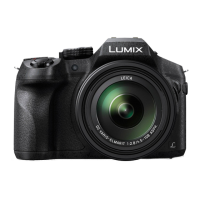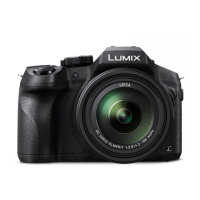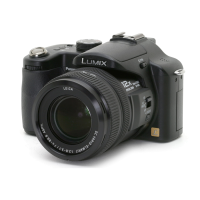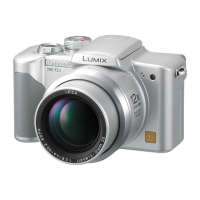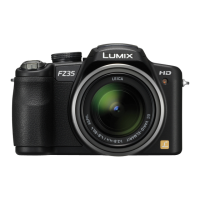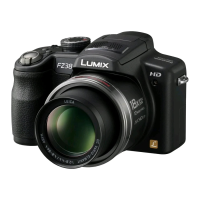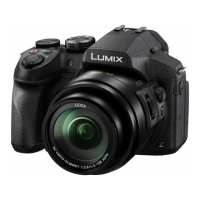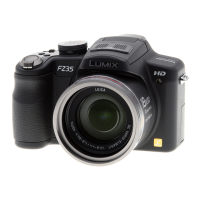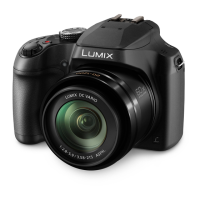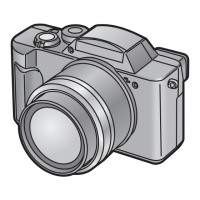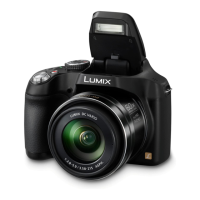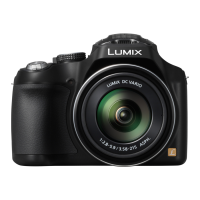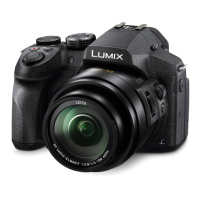
Do you have a question about the Panasonic Lumix FZ300K and is the answer not in the manual?
| Type | Bridge Camera |
|---|---|
| Megapixels | 12.1 MP |
| Lens | LEICA DC VARIO-ELMARIT |
| Optical Zoom | 24x |
| Digital Zoom | 4x |
| Maximum Aperture | f/2.8 |
| ISO Range | 100-6400 |
| Continuous Shooting | 12 fps |
| Dimensions | 131.6 x 91.5 x 117.1 mm |
| Sensor Type | 1/2.3" MOS |
| Shutter Speed | 60 - 1/4000 sec |
| Video Resolution | 4K UHD (3840 x 2160) |
| Display | 3.0" LCD |
| Viewfinder | 0.39" OLED |
| Waterproof | Splashproof |
| Connectivity | Wi-Fi |
| Battery | Li-ion Battery |
| Battery Life | 380 shots |
| Weight | 691 g |
Camera weight with memory card and battery pack inserted.
Camera physical dimensions in millimeters and inches (W x H x D).
Camera durability with splash-proof, dustproof material and taut sealing.
List of standard accessories included with the Panasonic Lumix FZ300k camera.
List of optional accessories to enhance the FZ300k user experience.
How to turn the camera on and off using the power lever on the top right.
Description of the status light located near the power switch indicating camera use.
Details on the camera's power source: 7.2 VDC, 1200 mAh battery and AC adapter.
Instructions on how to charge the DMW-BLC12E battery pack correctly.
Explanation of the charging light indicators showing charging progress and status.
Information on the estimated charging time for an exhausted battery pack.
Step-by-step guide on how to insert the battery into the camera's chamber.
Types of memory cards recommended for use with the Lumix GX8 camera.
Instructions for inserting a memory card into the camera's designated slot.
Steps to format the memory card for saving images and videos correctly.
Explanation of the shutter button's functions for focus, aperture, speed, and capture.
Description of the camera's three-inch OLED free-angle touch panel with tilt and swivel.
Instructions on how to open and adjust the camera's tilting and swiveling monitor.
Guide on using touch gestures like pinch, touch, and drag for camera navigation.
Details on capturing high-resolution still shots from 4K Ultra HD Video sequences.
Using 4K Ultra HD Video to capture high-resolution still images at high speed.
Explanation of the camera's dual zoom levers and how to adjust magnification.
Information about capturing and storing still shots in the RAW image format.
Supported file formats for images (JPEG, RAW) and videos (AVCHD, MPA).
Steps for safely attaching the lens hood to the camera's lens.
Instructions for securely attaching the lens cap using the provided camera accessory string.
Location and purpose of the mode dial for selecting shooting modes during photo shoots.
List of available shooting modes for the Lumix FZ300k camera.
Explanation of focus mode options (MF, AFC, AFS/AFF) and their functions.
How to use the side dial to modify or adjust focus, both auto and manual.
Function of the rear dial for adjusting aperture, shutter speed, and other settings.
Customizing the function of the side dial via the camera's menu settings.
Function of the side button to change the side dial's role or request focus.
Indicator that confirms the camera's connection status to a wireless network.
Using Wi-Fi and the Panasonic Image App for remote camera control and viewing.
Steps to enable and activate the camera's Wi-Fi function using the function button.
Description of the high-resolution OLED electronic viewfinder with magnification options.
Function of the LVF button to switch between viewfinder and monitor viewing options.
How the eye sensor automatically switches between viewfinder and monitor displays.
Adjusting the diopter dial to sharpen the appearance of images in the viewfinder.
Explanation of the five-axis HYBRID Optical Image Stabilizer Plus for blur reduction.
Details on Depth-From-Defocus technology for fast autofocus using continuous motion.
Guide to using Intelligent Auto modes for automatic scene and setting selection.
How to select between Intelligent Auto Plus Mode and Intelligent Auto Mode.
Using the HDR feature to combine multiple exposures for an ideal shot with rich gradation.
Using defocus control to create images with blurred backgrounds in specific modes.
Adjusting the camera's brightness or exposure level using the mode dial and rear dial.
How to use the motion picture button to start and stop video recording.
Steps for playing back recorded motion pictures via the playback mode.
Instructions for deleting a single image from the camera via the menu options.
